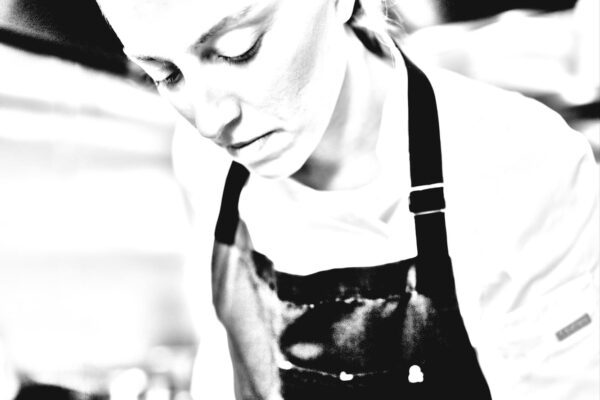With Hope & Glory

An East Austin Native’s Quest To Preserve History
Words by Sommer Brugal Photos by Eric Morales
Sitting in the George Washington Carver Museum and Cultural Center is a sculpture of Frederick Douglass. Hanging on the wall behind it, slightly off to the side, is the Emancipation Proclamation. The exhibit, Hope and Glory, was unveiled this past February. Berri McBride had the honor to present both.
McBride was among the first group of African American students admitted to the University of Texas at Austin. While the path towards graduation wasn’t easy, McBride understood early on that it was paved by the sacrifices of those before him, and he has dedicated the past thirty years of his life to preserving the history of those sacrifices.
While his time at the University of Texas at Austin impacted his desires to do so, he says two experiences had a life-long significance: the first being a visit to the Lincoln Memorial in Washington, D.C. and the second was viewing the Shaw Memorial, the monument to Colonel Robert Gould Shaw and the 54th Massachusetts Regiment, in Boston, Massachusetts. “I wanted others to sense and feel the same emotions I felt [while visiting these monuments].”
He decided the best way to show remembrance was to create his own works of art or get approvals to produce, or reproduce, important pieces or sculptures. His only requirement was that “[the pieces] had to be worthy of the people involved.”
Since then, McBride has collected and commissioned a number of pieces, including the sculpture of Frederick Douglass that currently resides in the George Washington Carver Museum and Cultural Center. McBride says Douglass’s involvement in the recruitment and organization of the 54th regiment warranted a certain kind of recognition. He says that sculpture, along with the latest representation of the Colonel Robert Gould Shaw and the 54th Massachusetts Regiment monument, “are [his] proudest pieces.”
Despite his collection, McBride says the pieces weren’t easy to come by. Tina Allen, the artist who sculpted the Frederick Douglass piece, only agreed to the task after she fully understood what McBride was working towards. “As soon as I mentioned the Shaw Memorial, she agreed,” McBride recounted. “[Allen] knew of the 54th regiment and understood how important they were to our country and to all of our freedoms.” Allen passed before her piece was presented to the public.
To McBride, seeing the sculpture at Carver Museum is not only rewarding but also a longtime coming. In the fall of 2015, McBride was involved in a serious automobile accident. He was on his way home to Dallas from Austin after meeting with the Carver Museum to discuss the presentation and exhibit of the Frederick Douglass sculpture. The accident resulted in an extensive long-term inpatient and outpatient physical rehabilitation. “To this day,” McBride said, “my doctors refer to me as a walking miracle.”
Despite this yearlong delay, though, McBride says the Carver Museum “never wavered from their interest and strong enthusiasm about presenting the sculpture and exhibit.” In the same way he wanted to show the determination, grit, and perseverance of the persons he’s chosen to represent in his collections, McBride, in his recovery, exhibited those same qualities.
As a son of East Austin, McBride chose the museum for specific reasons. “My parents were very active in East Austin and pushed education and hard work [on my siblings and me],” McBride said. “I’ll do what I can to preserve the great traditions and rich culture of East Austin.” He says he’ll do so by giving back to the community from where he came.
Despite the brutality and sadness the Douglass sculpture represents, McBride hopes visitors, especially those from the east side, can experience a feeling of excitement and a sense of pride as well. He hopes they understand the full impact of what the sculpture represents.
The sculpture of Frederick Douglass was the first piece to be unveiled in the Hope and Glory tableaux. The piece, “A Crack in the Armor,” was also on display. While McBride has a vision for where he’d like to see his pieces go next, he says the journey for each will begin at the Carver Museum in Austin’s Eastside.
Contact:
George Washington Carver Museum and Cultural Center
1165 Angelina Street
512.974.4926








